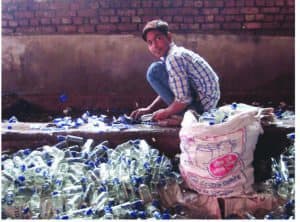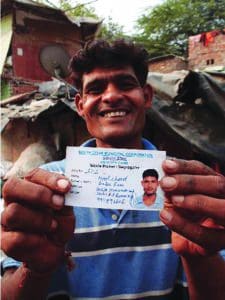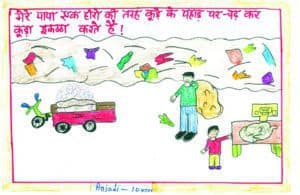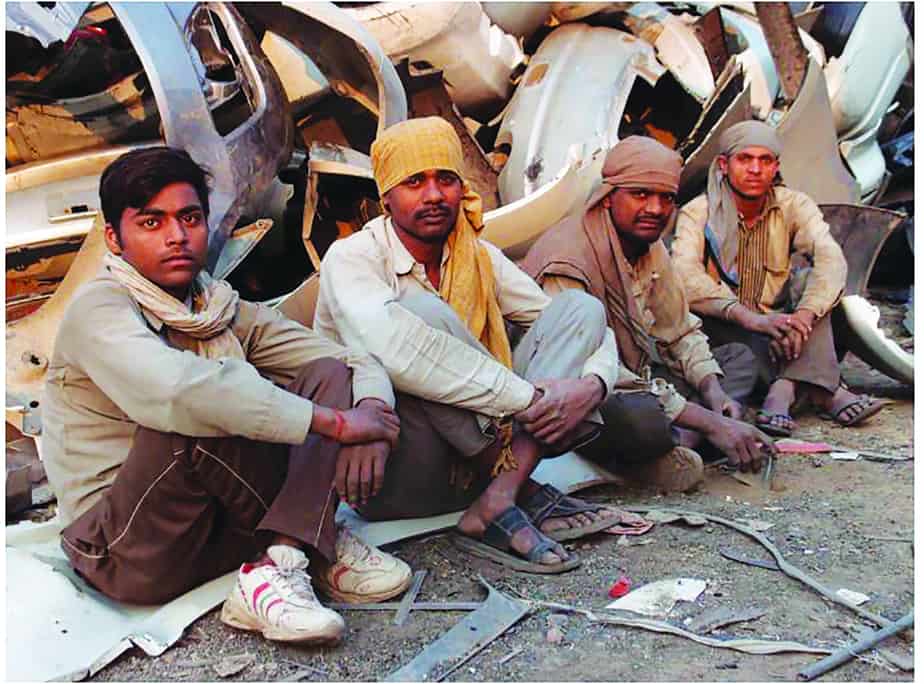The exhibition ‘City of Waste’ captures the lives of waste pickers — their struggles, aspirations and dreams
Mohan, a young boy from a small village in Uttar Pradesh tirelessly scrubs bottles in a glass bottle recycling factory at Kanchan Kunj in Delhi. Encouraged by his parents, he left home and got recruited through a thekedar’s network. They were lured with hopes of better paid jobs.
He does not pause even for a second as he plunges the bottles one at a time in soapy water, vigorously scrubbing the label off, carrying out the process endlessly, even when French researcher Rémi de Bercegol takes his photograph.

As you rush through one of the busiest metro stations in Delhi, Mandi House, you can’t miss Mohan’s photograph among several other photographs of waste workers from different parts of the world with a focus on Delhi, put up together on the walls of the station. Rémi is one of the six French photographers whose works are being showcased at the exhibition, ‘The City of Waste’. “All around the world, you can find a ‘city of waste’ working in parallel to the main city.”
With 42 photographs, the exhibition tries to document the conditions waste workers work and live in. “Looking beyond the dismal picture often attached to the waste sector, this project restores the dignity of those who recycle and earn an income from it,” he explains.
Rémi, a visiting researcher from 2008 to 2012 at the Centre for Social Sciences and Humanities in Delhi, became curious about the journey of trash from his home after it was picked up by Moolchand, a waste picker in South Delhi. He decided to follow him to his home in RK Puram. “I was living in South Delhi at this time, and I had no idea that there was a slum of waste pickers just near my place.” Fascinated with the whole system of collection, segregation and recycling, he began taking photographs to document the life and work of waste pickers in several locations of Delhi like Okhla landfill, Tikri Kalan market, Narela, Kanchan Kunj and others.
“The workers were generally surprised to see a foreign guy who can talk basic Hindi interested in their business and their life. Sometimes, people can be suspicious as I was not promising something very concrete, I was just documenting and understanding their life, but most of the time, they were quite welcoming. It’s easy to converse with them,” he adds.
After returning to France, Rémi met numerous other researchers who were working on the same issue in other parts of the world. Together with five other researchers, he initially launched a photo exhibition in France, and later on adapted it for India by refocusing on Delhi.
Far from sharing an image of misery or marginality with the public, this exhibition seeks to focus on women and men freed from the stigma attached to contact with waste. They are seen as normal workers, busy doing their jobs; workers who want to be considered equal to others, recognized for their work and by society. “The pose they adopt, quite naturally or on the photographer’s request, and the smiles and gazes intended for the lens, show their aspiration to depict a normal portrait of themselves and their activity,” says Rémi.

In one of the photographs, Moolchand is seen grinning widely at the camera as he proudly holds up his identity card. In another he captured four young workers at a car bumper sawmill in Tikri Kalan, a market dedicated to the resale of wholesale plastic. Rémi recalls, “One of them untied his scarf to reveal his carefully combed hair. They began to laugh shyly as I show them the photographs on my camera. This was the first time they saw themselves together, side-by-side. They laugh at the similar poses and one gently mocked his neighbour’s stiff posture, and teased him about the way he stands.”
The social dynamism of the waste sector in the city left him surprised. “There is a mixture of extreme poverty in which many family of waste pickers are living, the migrants coming from Bangladesh to survive on the waste of the wealthy middle class of South Delhi, and the quite normal life of some waste businessmen, who succeeded in life and can send their children to school,” Rémi explains.
Rémi’s best memory, however, was with the children of waste-pickers. Chintan Environmental Research and Action Group, a Delhi-based NGO, organised a drawing session titled ‘Draw your Favourite Heroes’ with these children where they described the daily life of their parents at home and at work with great finesse. One of the drawings made by 10-year-old Anjali, depicts her father courageously recovering recyclable waste at the top of the Okhla landfill before weighing it and reselling it to support his family. Fifteen of these drawings are on display in the exhibition.

Be it the biffins in Paris, the cartoneros in Argentina, the catadores in Brazil, the dognat in Vietnam or our very own kabadiwalas in India, all have one thing in common. ‘All these men, women and sometimes children pushed to the fringes of the labour market and often living on the margins of society, are making a living from city dwellers’ refuse,” he adds.
His images show the open landfills, public spaces, garbage dumps, retrieval and recycling workshops, where waste is reclassified and garbage is transformed into a profitable resource. He also displays the clothes that protect their bodies: rags, strips of cloth, even plastic bags. The techniques and tools they use – baskets, hooks, carts, etc., the materials they extract – plastic, cardboard, metal, glass, fabric, etc.
So, spare some time to check out the photographs of those who are tirelessly working towards making a Swachh Bharat. The exhibition will be on till June 30.





